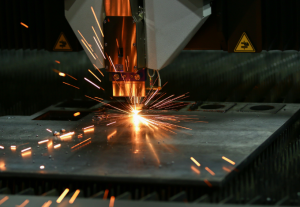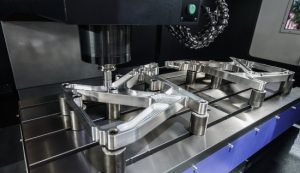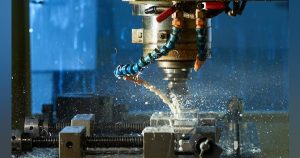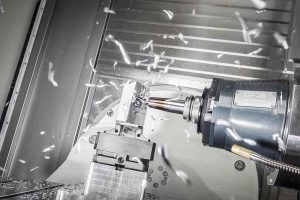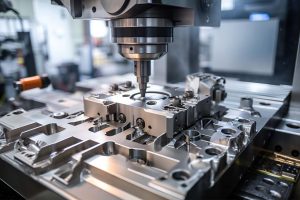Certain materials like silicone (thermal conductivity ~0.2 W/m·K), carbon fiber composites (tensile strength 6000-7000 MPa), and ceramics (fracture toughness 3-4 MPa·m^0.5) are difficult to CNC machine due to their hardness and poor thermal conductivity.
Ceramic Materials
The hardness of ceramic materials is typically between 1500 to 3000 Vickers hardness (HV), higher than most metals and alloys. This high hardness leads to brittleness during cutting, especially in high-speed machining. The brittleness of ceramic materials makes them prone to fracture under stress.
Ceramic materials with low thermal conductivity. This means that during machining, the cutting heat is difficult to dissipate from the graphite to the ceramic with low thermal conductivity (generally around 20-30 W/m·K), whereas metals have higher thermal conductivity, generally above 200 W/m·K. Therefore, it will produce uncontrollable local temperature rises, increasing the risk of ceramic material brittleness due to poor cooling conditions.
These issues can be corrected by processing ceramic materials using special techniques such as laser machining, electrical discharge machining, and ultrasonic machining. Laser machining: utilizing high-energy laser beams to melt or evaporate ceramic materials for non-contact processing; electrical discharge machining: using electric sparks to melt and evaporate materials, suitable for machining complex shapes of precision ceramics; ultrasonic machining: using ultra-high-frequency vibrations to remove workpiece materials, suitable for precision machining.
Many ceramic parts are formed through powder metallurgy processes and then sintered at high temperatures. For example, ceramic tools, ceramic bearings, and ceramic sealing rings are produced in this way.

Composite Materials
Composite materials include carbon fiber composites, glass fiber composites, and aramid fiber composites. The multiphase nature and heterogeneity of these materials make CNC machining very complex and challenging.
The tensile strength of carbon fiber composites is usually between 6000 and 7000 MPa, several times higher than steel, while its density is only about one-quarter of steel. However, this material is prone to delamination and fiber pull-out issues during CNC machining, leading to poor surface quality.
Glass fiber composites have good corrosion resistance and electrical insulation properties, with tensile strengths generally between 1500 and 3500 MPa. The hardness and brittleness of glass fibers exacerbate tool wear and make it difficult to dissipate cutting heat, resulting in tool life being 40% to 60% shorter when machining glass fiber composites compared to metal materials.
The fracture toughness of aramid fiber composites reaches 50 to 100 MPa·m^0.5. Its high toughness and elastic modulus cause issues like fiber rebound and surface burrs during CNC machining, making it challenging to achieve ideal machining results.
Special machining techniques like waterjet cutting and laser cutting are commonly used in the industry. Waterjet cutting uses high-pressure water flow and abrasives for cutting, avoiding high-temperature damage to the material; laser cutting uses high-energy laser beams to melt and vaporize materials, achieving high-precision non-contact processing.
The manufacture of composite materials typically uses processes like molding, pultrusion, and resin transfer molding (RTM). For example, carbon fiber automotive body parts are usually produced through molding to ensure high strength and lightweight. The molding process involves placing carbon fiber prepregs into a mold, then heating and pressing to make the resin flow and cure, forming the final part.
Rubber and Elastomers
Rubber and elastomer materials are widely used in many applications due to their excellent elasticity and flexibility, but these properties also make it difficult to achieve precise shaping through CNC machining.
The main challenge in machining rubber and elastomers is the deformation characteristics of the materials. Rubber materials undergo significant elastic deformation under stress, making it difficult for traditional CNC cutting tools to accurately remove material, often leading to dimensional errors and increased surface roughness.
Silicone is a common elastomer with tensile strengths generally between 4 to 10 MPa and elongations reaching 300% to 700%. The low thermal conductivity of silicone (about 0.2 W/m·K) makes it difficult to dissipate heat quickly during machining, potentially leading to excessive tool wear and surface degradation.
Polyurethane elastomers are high-performance materials with a Shore A hardness range of 50 to 95. When machining polyurethane elastomers, cutting tools need to be frequently replaced to deal with material wear and heat buildup.
The industry commonly uses processes such as molding, injection molding, and extrusion to process rubber and elastomers. For example, automotive sealing strips are typically produced using extrusion processes, where rubber materials are continuously extruded into the desired shape using a screw extruder.



